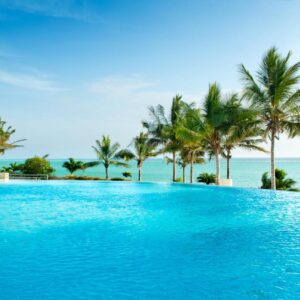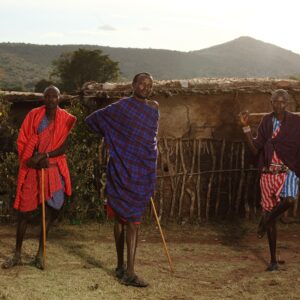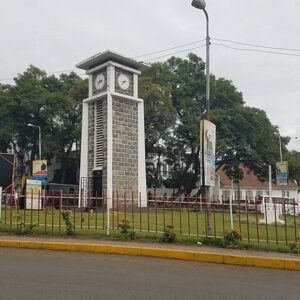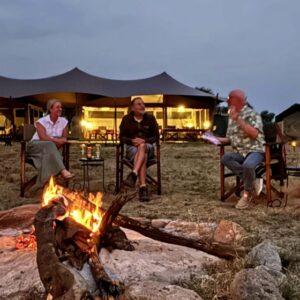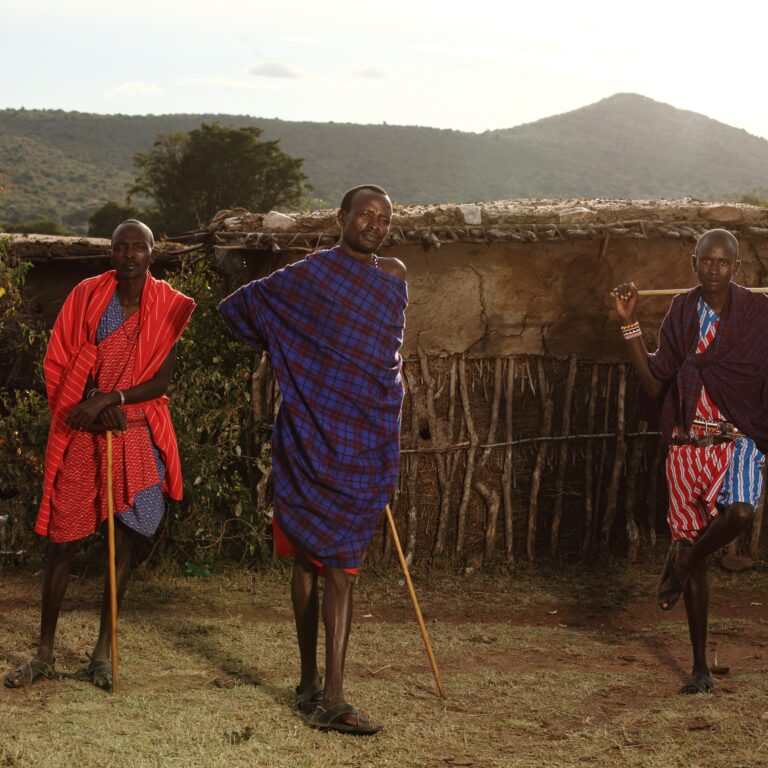Planning a trip to Tanzania in January means looking ahead to one of the most rewarding times to experience this incredible East African nation. January falls within a distinct period that offers unique advantages for wildlife viewing, cultural immersion, and adventurous pursuits. January in Tanzania is a captivating time, often described as a “green season” interlude between the short and long rains. This month offers a unique blend of vibrant landscapes, exceptional wildlife opportunities, and a more intimate travel experience compared to the peak dry season. For those dreaming of an African adventure, understanding the nuances of a January trip can help unlock an unforgettable journey.
1. Tanzania Weather in January
January sits squarely in the short dry season, or sometimes referred to as a “mini dry season,” following the “short rains” of November and December. While it’s not as bone-dry as July or August, the rains are generally much less frequent and typically occur as brief, refreshing showers, often in the late afternoon or overnight, leaving ample sunshine for daytime activities.
Temperature. Expect warm to hot days, with average daytime temperatures ranging from 25°C to 32°C (77°F to 90°F) in most safari areas and coastal regions. Nights are generally mild, dropping to around 15°C to 20°C (59°F to 68°F). Higher altitudes, like the Ngorongoro Crater rim or Mount Kilimanjaro, will be significantly cooler, especially at night.
Rainfall. While sporadic showers are possible, particularly at the start of the month, January is generally characterized by clear skies and sunny periods. The air feels fresh and clean, and the dust levels are significantly lower than in the dry season.
Humidity. Humidity levels will be moderate to high, especially in coastal areas like Zanzibar, but less oppressive than during the long rains.
2. Why Visit Tanzania in January
Visiting Tanzania in January comes with a host of benefits that appeal to various types of travelers. January is a great time to visit Tanzania for wildlife viewing, especially the Great Migration in the southern Serengeti, where wildebeest give birth. It’s also shoulder season, meaning fewer crowds and potentially lower prices compared to peak season. The weather is warm and sunny, with a chance of short, refreshing rain showers, making it ideal for safaris and beach vacations.
The Great Migration’s Calving Season. This is arguably the biggest draw. The vast herds of wildebeest and zebra gather in the southern Serengeti for the calving season, offering unparalleled predator action and the heartwarming sight of thousands of newborn calves.
Lush, Green Landscapes. The short rains have transformed the parched plains into verdant grasslands, creating stunning photographic opportunities and a beautiful backdrop for wildlife viewing.
Excellent Birdwatching. With abundant water and food, resident and migratory bird species are in full display, making it a prime time for avid birders.
Fewer Crowds. Compared to the peak dry season (July-September), January sees fewer tourists, translating to more intimate safari experiences and better availability at lodges.
Lower Costs. While still a popular time, some lodges and tour operators may offer slightly lower rates than the absolute peak season, providing better value.
3. Where To Go in Tanzania in January
In January, Tanzania offers excellent opportunities for both safari and beach vacations. The Serengeti is a prime destination for witnessing the wildebeest calving season, while the Ngorongoro Crater provides fantastic wildlife viewing. Zanzibar is also ideal, with warm, sunny days perfect for relaxing on the beaches.
Serengeti National Park (Southern Plains). Without a doubt, the southern Serengeti, particularly the Ndutu region and the short grass plains, is the top destination. This is where the Great Migration’s calving season takes place, drawing immense concentrations of wildebeest, zebra, and their predators.
Ngorongoro Conservation Area. Always a wildlife hotspot, the Ngorongoro Crater remains excellent in January. The rich grasslands on the crater floor provide ample food, supporting a high density of animals year-round, including the Big Five.
Tarangire National Park. While not its absolute peak, Tarangire still offers good game viewing in January. The Tarangire River remains a crucial water source, drawing elephants and other animals. The vibrant green scenery is also a bonus.
Lake Manyara National Park. Known for its tree-climbing lions (though sightings are not guaranteed) and diverse birdlife, Lake Manyara is beautiful in January with its lush groundwater forest.
Zanzibar and the Coast. After a dusty safari, the pristine beaches and turquoise waters of Zanzibar, Pemba, or Mafia Island offer the perfect relaxation. January provides warm, sunny days ideal for swimming, snorkeling, and diving.
Mount Kilimanjaro & Mount Meru. January is an excellent month for climbing due to clearer skies and less rain than the true wet seasons. Conditions are generally more stable, offering good visibility.
4. What to Do in Tanzania in January
In January, Tanzania offers a variety of experiences, with the Serengeti National Park being a highlight for the wildebeest calving season. You can also enjoy the beaches of Zanzibar, climb Mount Kilimanjaro, or explore other national parks like Tarangire and Ngorongoro.
Witness the Great Migration Calving. This is a non-negotiable if you’re in the southern Serengeti. Spend days observing newborns, predator-prey interactions, and the sheer scale of the herds.
Game Drives. Enjoy thrilling game drives in the national parks, spotting a wide array of wildlife against a green backdrop.
Birdwatching. Grab your binoculars and marvel at the prolific birdlife.
Cultural Visits. Engage with local communities like the Maasai, or visit the Hadzabe near Lake Eyasi for a truly unique cultural experience.
Hot Air Balloon Safari. A magical way to see the Serengeti, especially over the calving grounds.
Beach Relaxation & Water Sports. Unwind on Zanzibar’s beaches, go snorkeling, diving, or enjoy dhow cruises.
Mountain Climbing. Tackle Kilimanjaro or Meru, taking advantage of the favorable climbing conditions.
5. When to Visit Tanzania in January
January is widely considered one of the best times to visit Tanzania, particularly if your primary interest is the Great Migration’s calving season in the southern Serengeti. It offers a fantastic balance of wildlife viewing, pleasant weather, and relatively fewer crowds compared to the mid-dry season.
6. Animal & Wildlife Tanzania in January
January is synonymous with the Great Migration’s calving season in the southern Serengeti, particularly around the Ndutu Plains. Thousands of wildebeest calves are born daily, turning the plains into a nursery. This concentration of vulnerable young animals attracts an abundance of predators – lions, cheetahs, leopards, and hyenas – offering incredible opportunities to witness hunting and survival in action.
Beyond the Migration, all major wildlife species are active and easily spotted. Elephants, giraffes, zebras, buffalo, and a wide variety of antelopes thrive in the lush environment. Birdlife is exceptionally vibrant, with many migratory species present.
7. What to Expect in Tanzania in January
In January, Tanzania experiences warm and relatively dry weather, making it a good time for a safari and other outdoor activities. The short rains have ended, and the “green season” begins, characterized by sunny days and occasional showers. Temperatures are generally in the mid-80s Fahrenheit (around 29-30°C) during the day, with cooler evenings.
- Vibrant Landscapes. Expect green, lush plains and forests.
- Warm Weather. Comfortable days, cooler evenings, perfect for safari wear.
- Less Dust. Significantly less dust than the dry season, making for cleaner air and better photography.
- Photographic Opportunities. Stunning light and clear air for incredible photos.
- Mosquitoes. With more water, mosquito activity can be higher, especially at dawn and dusk. Malaria precautions are essential.
- Road Conditions. Some unpaved roads might be muddy or slippery after rain, but generally manageable.
8. What To Bring for Tanzania in January
For a January trip to Tanzania, pack lightweight, neutral-colored clothing for warm days and layering pieces for cooler mornings and evenings. Don’t forget essentials like a hat, sunscreen, insect repellent, and comfortable walking shoes. Since January is part of the short rainy season, a light jacket or rain poncho might be useful.
Lightweight, breathable clothing. Long sleeves and pants for evenings to protect against mosquitoes.
Layers. For cooler mornings/evenings and changing temperatures.
Rain jacket/poncho. Lightweight and waterproof for sporadic showers.
Wide-brimmed hat, sunglasses, high SPF sunscreen: For sun protection.
Insect repellent (with DEET): Essential for mosquito protection.
Closed-toe shoes/boots: For safari walks or mountain treks. Sandals for leisure.
Swimwear: For beach holidays.
Camera with zoom lens, extra batteries, memory cards.
Binoculars: Crucial for wildlife viewing.
Small backpack/daypack.
Personal first-aid kit, including anti-malarial medication (if prescribed).
Power adapter (Type G and D).
9. Crowds & Costs Tanzania in January
January in Tanzania generally experiences moderate crowds and costs, falling into the shoulder season. While not as busy as the peak season, you’ll still encounter other travelers, especially at the beginning of the month due to New Year’s celebrations and during the wildebeest calving season in the Southern Serengeti. Prices for accommodations and activities may be higher at the start of January but tend to decrease as the month progresses.
Crowds. January is considered part of the “shoulder season” or “green season” for overall tourist numbers. While the southern Serengeti will be busy due to the Migration, other parks and regions will be less crowded than the high dry season. This translates to a more relaxed atmosphere and better opportunities for wildlife viewing without feeling rushed.
Costs. Generally, lodge and safari prices in January can be slightly lower than the absolute peak months of July-September. However, given the popularity of the calving season, some lodges in the Ndutu area might still command premium rates. Overall, you might find slightly better value for money compared to the mid-year peak.
10. Tips for Traveling to Tanzania in January
Traveling to Tanzania in January offers pleasant weather, great wildlife viewing opportunities, and fewer crowds than peak season. To make the most of your trip, pack lightweight, breathable clothing, a waterproof jacket, and warm layers for cooler evenings. Book accommodations and safaris in advance, and be sure to bring essentials like sunscreen, insect repellent, and a good camera.
Book in Advance. Especially if you want to stay in specific lodges in the Ndutu area, book well ahead due to the calving season’s popularity.
Pack Smart. Layers are key for varying temperatures. Don’t forget rain gear and insect repellent.
Stay Hydrated. Drink plenty of water throughout the day.
Malaria Prophylaxis. Consult your doctor about anti-malarial medication and take all necessary precautions.
Flexible Itinerary. While generally stable, be prepared for potential brief changes to plans if heavy rains affect road conditions (though less likely in January than April/May).
Engage with Guides. Your local guides are invaluable sources of information about wildlife and local culture.
Respect Local Customs. Dress modestly, especially when visiting local villages or religious sites.
11. Safari & Tours Tanzania in January
January is a great time for a safari in Tanzania, particularly in the Southern Serengeti and Ngorongoro Crater areas, due to the wildebeest calving season. This period attracts predators, offering exciting wildlife viewing opportunities. The weather is generally warm and dry, with lush vegetation from the short rains, making for pleasant game viewing conditions. Also, January is an exceptional month for safaris. Most tour operators will highlight itineraries focusing on the southern Serengeti to capitalize on the Great Migration. Consider combining your safari with:
A Zanzibar beach holiday: A perfect complement after safari dust.
A cultural tour to Lake Eyasi: To interact with the Hadzabe and Datoga tribes.
A climb up Kilimanjaro or Meru: Ideal conditions for trekking.
Reputable tour operators will organize tailor-made safaris that balance game viewing with comfortable accommodation and expert guiding, ensuring you make the most of this prime month.
Ngorongoro in January – Weather, Prices, Travel Tips, Safari
Discovering the Magic of Serengeti in January
Climbing Kilimanjaro in January
Where to Go on an African Safari in January
Where To Go on an African Safari in February
In conclusion
January offers a truly magnificent time to visit Tanzania. With the drama of the Great Migration’s calving season, vibrant green landscapes, abundant birdlife, and a more relaxed atmosphere, it promises an authentic and unforgettable African adventure.

